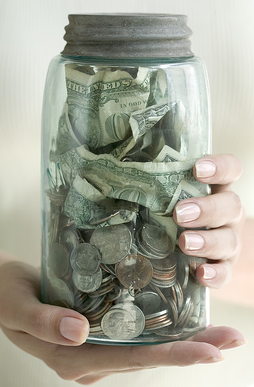Myths and realities about the process and the results
There are approximately 15 million commercial and industrial buildings (over 60 billion square feet) in the US. They account for 40% of total energy use, including 70% of electricity, 35% of greenhouse gas emissions, and 12% of potable water. Every existing building that becomes certified under LEED (Leadership in Energy and Environmental Design) for Existing Buildings, Operations and Maintenance (EBOM), reduces those numbers and helps our environment.
But maybe you’re wondering if LEED EBOM is the right way to go.
If you’re a facility manager or building owner, and you’re wondering if it’s “worth it” to apply for LEED EBOM certification, let me tell you, it may not be.
- It’s not worth it if you do not want to save money.
- It’s not worth it if you do not want to add value to your building.
- It’s not worth it if you do not want recognition.
- It’s not worth it if you do not want to work too hard.
Myth #1: I Won’t Really Save Money
It’s true that there will be expenses in applying for LEED certification. There is the application fee itself, which is only $1,200. Then there is the certification fee, which is less than $3,000 for buildings smaller than 50,000 square feet, and of course, more for larger buildings. Then there is all the work that may have to be done to your building before you submit the application. But the savings will far outweigh these costs over time.

For example, The US Green Building Council, the organization that sponsors LEED, notes that a “green building” can lower operating costs by an average of 8.5%.
Yes, an audit costs money, but if you hire the right audit company, and implement even some of the recommendations, it will more than pay for itself – often within one to three years.We recommend starting with a building Energy Audit (at least a Level 2 audit) that will offer some recommendations on how much you can improve and what it will cost. A qualified energy audit team will provide a list of short-, medium- and longer-term ROI changes.
In addition, your building may qualify to apply for a tax deduction under the Energy Policy Act of 2005, (EPAct - available through 2013).
Myth #2: It Doesn’t Do Anything for My Building
According to a 2008 study by the CoStar Group, “Green buildings outperform their non-green peer assets in key areas such as occupancy, sale price and rental rates — sometimes by wide margins.”
The USGBC believes that “Green features will increasingly enter into tenants' decisions about leasing space and into buyers' decisions about purchasing properties and homes.”
Being green is more than trendy or stylish; it’s being a smart and practical consumer. An energy efficient building will have lower operating costs and better indoor environmental quality, and thus be “more attractive to a growing group of corporate, public and individual buyers.” USGBC even notes higher lease-up rates for such buildings – up to 20% above average.
Myth #3: No One Cares About it Anymore
While it may not make headlines every day, becoming LEED certified can significantly raise your profile in the community and bring more traffic to your door. Both small and large projects can garner free publicity.
When our client, LaFontaine Automotive Group of Highland, Michigan, received LEED Gold certification, they also received a lot of recognition. Articles appeared in more than a dozen newspapers and business publications, and the owners were interviewed on television. The company continues to promote their green building with articles and videos on their web site. While instituting green measures cost more than $1 million, it is clear that they received considerably more than that in free publicity.
Another project we worked on, Temple Kol Ami in West Bloomfield, Michigan, is in the process of applying for LEED certification. Just because of the application process and the work done already, they received an Outstanding Congregation Award from Michigan Interfaith Power and Light. Articles have appeared in the local papers, and some national publicity is expected once the building achieves certification.
Myth #4: It’s Too Hard
I wish it were easy for building owners, institutions and governments to build buildings that minimally impact the environment while providing healthy workplaces. If we had always done it this way, we might not have some of the environmental problems we have today, e.g., overflowing landfills, water shortages in many areas of the United States, polluted rivers and lakes, etc.
Many people still think LEED is for new construction. And while it may be easier to plan for LEED when you are starting from scratch, the truth is, with 15 million buildings in this country alone, there is greater opportunity to have an impact with existing buildings.
Even historic buildings are getting in the act! The U.S. Treasury building in Washington D.C., built in 1869, is the oldest building to earn LEED Gold for Existing Buildings: Operations and Maintenance.
Yes, it can be a huge undertaking. It can take as long as building a new building. So be sure to plan an appropriate timeline. Working with an experienced LEED Project Administrator can help. Also, check out the myriad of resources on the USGBC website as well as LEEDUser. LEEDUser’s LEED-EBOM Stress Test offers a credit-by-credit readiness review.
Green buildings, existing or new, are smart buildings. Is it worth it to you to own or work in one?



